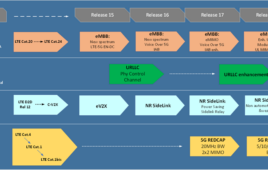Many of us remember the technology wars between GSM and CDMA, and even TDMA.
Moving to 4G doesn’t mean those days are completely over.
Some people seem to think that because Verizon Wireless is linked up with the LTE camp, the technology wars are over. I beg to differ. Having recently returned from Mobile World Congress (MWC) in Spain, I find the LTE and WiMAX rhetoric is as fiery as ever, and that’s not a bad thing.
|
WiMAX vs. LTE
Verizon Wireless is driving the LTE train straight to 2010, with plans to go commercial in 25 to 30 markets. Back in 2007, the operator broke ranks with the CDMA camp by choosing LTE over UMB, aligning itself with co-parent Vodafone. Now it’s pursuing an ambitious plan to roll out its flavor of 4G. The entire LTE community is watching.
With only two mobile WiMAX markets up and running and a miniscule number of subscribers compared with Verizon’s 80 million, you might be tempted to dismiss Clearwire as a small upstart that needs a lot more cash to get anywhere near Verizon. But it has that $3.2 billion investment from the likes of Comcast, Intel, Time Warner Cable and Google, so it’s got serious backers with some vested interest in seeing it through. Clearwire says it is moving “full-speed ahead” with plans to introduce new mobile WiMAX markets, services and devices this year. I hope by “full-speed ahead” that means dozens of markets, because the window of opportunity is not open for long. More details about its plans are expected when Clearwire reports fourth-quarter results on March 5.
No doubt, the progression of mobile WiMAX encouraged Verizon to put the pedal to the metal on LTE. Verizon can’t afford to let an upstart with deep-pocket investors draw away its potential wireless data customers. But there’s both a marketing and technology play going on here, as is usually the case with wireless rollouts. Clearwire has to make sure its service works well in the markets where it offers mobile WiMAX; people are not going to put up with hiccups or gaps in coverage. (Many former Sprint customers can attest to that.) Verizon can boast all it wants about its EV-DO network quality because it’s a proven service.
Then there’s the economy, which can be both good and bad for Clearwire. Capital markets are all but dried up and its investors are taking charges against their financial results. On the other hand, consumers are looking for better deals. Clearwire executives said as much when they launched service in Portland, Ore., in January, and while at the time I sort of dismissed it as “what else are they going to say?,” it actually hits home. A Portland resident, I’m considering ditching Comcast for Clearwire if it means saving even $10 a month or $120 a year.
Of course, there are places where LTE and WiMAX come together. They share a common baseline technology in OFDM. WiMAX was developed based on the idea of an open ecosystem, and LTE supporters describe a very similar environment – one where all kinds of devices and device makers are invited to partake. That should prove beneficial for the industry in the long run as the whole concept of openness continues to be a front-burner issue.
STANDARD API?
Referring to an entirely different kind of standard, AT&T Mobile CEO Ralph de la Vega went to great lengths during his keynote at MWC to explain why the industry needs to come up with a common application interface so that customers, especially at the enterprise level, can adopt apps without worrying about platforms and operating systems. It’s well understood that developers must decide which platforms for which they are going to develop; for many developers, it’s just too costly to develop for all of them. I’m not sure what solutions will become of this discussion, but de la Vega got the conversation started.
THE HANDSET WARS
We did not see the scope of Android handset announcements at MWC that many people expected. I didn’t see a lot of real differentiation among handset manufacturers, either. The Palm Pre is one device the industry can get excited about when it rolls out with Sprint, but other than that, it’s more of the same.
If I see one more company open an apps store, I’m going to boycott the next Olympics. Seriously, what will be interesting to see is whether anyone gets anywhere near the success of Apple. I suppose the others don’t have a choice; you’ve got to sell apps. But as a fellow passenger remarked on my way back from MWC, Apple is a lifestyle company, not a technology company. If phone companies want to become lifestyle companies, they need to change their entire culture.
From where I sit, Nokia probably has the best chance of pulling off something akin to that, but frankly, I have not been really excited about any of its U.S. phones. Perhaps that will change. Maybe Nokia’s folks in San Diego will dream up something so eye-popping and social networking-cool that it will get all the kids talking. Then maybe we’ll have something new to talk about at next year’s MWC.





